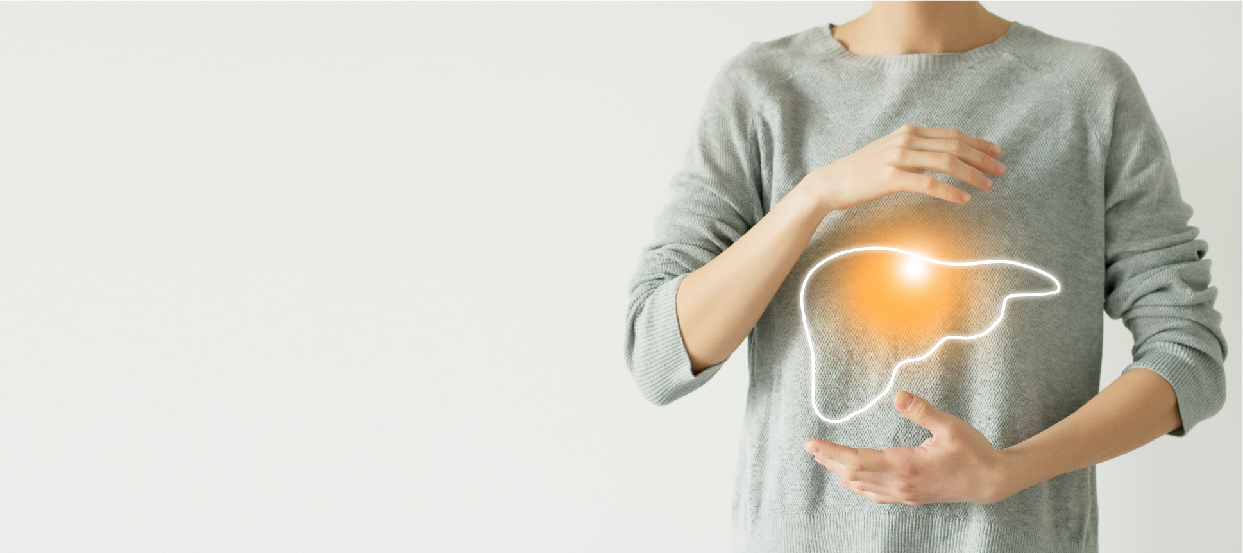
The liver is the largest organ inside your body. It helps your body digest food, store energy, and remove poisons. Fatty liver or hepatic steatosis is a condition in which excess fat builds up in your liver. Metabolic disorders like obesity, type 2 diabetes, and hyperlipidemia with or without alcohol consumption lead to excess fat deposition. The two types of fatty liver that are most frequently observed are non-alcoholic fatty liver diseases and alcoholic fatty liver diseases. Based on the deposition of the fat in the liver cells, the fatty liver condition is graded from grade 1 to grade 3, with grade 1 representing the mild form, grade 2 the moderate form, and grade 3 the severe form.
Non-alcoholic fatty liver disease (NAFLD) contributes to a large proportion of liver disease burden in the world.
Fatty liver is a medical condition in which excess fat builds up in your liver. Metabolic disorders like obesity, type 2 diabetes, and hyperlipidemia with or without alcohol consumption lead to excess fat deposition. Fatty liver is also known as hepatic steatosis.
The causes and risk factors for developing fatty liver include:
There are two main types of fatty liver disease. They are:
Alcoholic fatty liver disease is the type of fatty liver that occurs in people due to excess consumption of alcohol. Most of the alcohol you consume is broken down by your liver and eliminated from your body. However, the breakdown process may produce toxic substances. These chemicals have the potential to harm liver cells, increase inflammation, and impair your body's defense mechanisms. Your liver will suffer greater damage the more alcohol you consume. The initial phase of alcohol-related liver damage is referred to as alcoholic fatty liver disease. The next stages are alcoholic hepatitis and cirrhosis.
Non-alcoholic fatty liver disease is the condition in which excess build-up of fat occurs in the liver in people who do not consume alcohol. The 2 forms of NAFLD are:
Typically, AFLD and NAFLD are asymptomatic. Some patients may have symptoms like fatigue or pain in the liver's location on the upper right side of the abdomen. If you have NASH (nonalcoholic steatohepatitis) or get cirrhosis, you may experience the following symptoms:
The fatty liver is categorized into three distinct types based on the visual abnormalities seen on the ultrasound:
Grade 1 Fatty Liver is the least severe kind. Here, the fat builds up on the organ's exterior without affecting its functionality
Grade 2 Fatty Liver is a moderately severe kind that needs to be treated medically to keep from getting worse. A person has grade 2 fatty liver disease if they display signs like steatosis (build-up of fat in liver cells), ballooning of hepatocytes, intralobular inflammation, and mild to moderate portal inflammation.
Grade 3 Fatty Liver is a case of fatty liver manifests as symptoms. Active treatments are necessary.
Although fatty liver rarely exhibits initial symptoms, your doctor can be the first to identify a problem. High levels of liver enzymes on a blood test for another condition indicate liver damage that could be because of fatty liver.
In order to diagnose you, your doctor might do the following:
There are no particular medications or therapies available to treat fatty liver. Doctors concentrate on assisting you in managing the risk factors that lead to the disease. Making lifestyle adjustments that can enhance your health is part of this. Your doctor might advise you to:
Also, Read: Home Remedies for Fatty Liver disease
Consider fatty liver disease as an alert that can assist you in taking preventative measures against liver diseases that can be fatal, such as liver cancer or cirrhosis. Scarring is more dangerous than having too much fat in your liver. Find out from your healthcare practitioner whether you have a chance of having liver inflammation or scarring. If so, concentrate on treating the underlying causes and aggravating factors, such as alcohol consumption and metabolic disorders. You have the power to safeguard your liver, enhance your well-being, and perhaps even save your life.
Get personalized advice to enhance liver health from the best liver specialist doctor in Pune, Dr. Abhishek Yadav. It is one of the best options available in Pune city to offer you the best treatment for managing fatty liver disease. Book your Appointment today.
Q1: Is grade 1 fatty liver dangerous?
A: No, Grade 1 fatty liver is the mildest form, and the fat buildup at this point is still relatively harmless. Although untreated grade 1 fatty liver disease may not directly increase the risk of liver cancer, it can lead to more severe stages of the illness, which may raise the risk of liver cancer.
Q2: Which grade of fatty liver is serious?
A: Of all the fatty liver stages, grade 3 fatty liver is the most harmful. When there is an excessive amount of fat ingested, healthy cells that perform numerous vital tasks start to perish. Patients who do not consciously change their food, or lifestyle, or receive timely medical attention may develop grade 3 fatty liver.